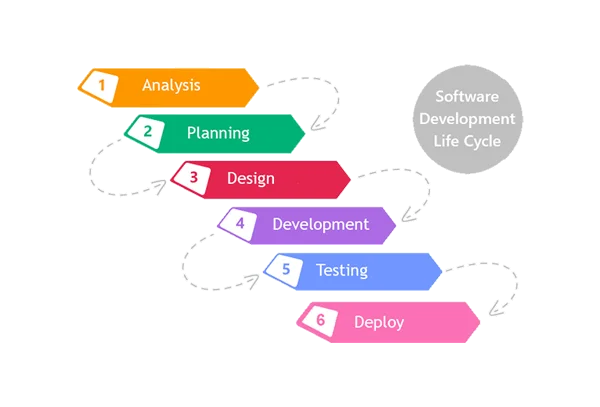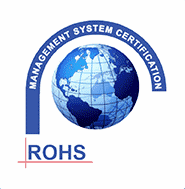- Home
- Courses
- Projects
- 100% Placement
- Students Life
- About
- More
- Contact
- Certificate Verification
PROJECTS
CORPORATE TRAINING PROGRAMMES
Projects
Project Development Life Cycle
Project Development Life Cycle is a process used by software industry to design, develop and test high quality softwares. Ilife Academy aims to produce a high quality software that meets or exceeds student’s expectations, reaches completion within times and cost estimates.
The following figure is a graphical representation of the various stages of a typical Project Development Life Cycle

A typical Software Project Development life cycle consists of the following stages:
Stage 1: Analyse


Requirement analysis is the most important and fundamental stage in Software Development Life Cycle (SDLC). It is performed with inputs from the customer, the sales department, market surveys and domain experts in the industry.
This phase will determine the requirements like: Who is going to use the system? How will they use the system? What data should be input into the system? What data should be output by the system? These are general questions that get answered during a requirements gathering phase. This information is then used to plan the basic project approach and to conduct product feasibility study in the economical, operational, and technical areas.
Stage 2: Planning and Defining Requirements


Planning for the quality assurance requirements and identification of the risks associated with the project is also done in the planning stage. The outcome of the technical feasibility study is to define the various technical approaches that can be followed to implement the project successfully with minimum risks.
The next step is to clearly define and document the product requirements and get them approved from the customer or the market analysts.
Stage 3: Designing the product architecture


Software Requirement Specification (SRS) is the reference for product architects to come out with the best architecture for the product to be developed. Based on the requirements specified in SRS, usually more than one design approach for the product architecture is proposed and documented in a DDS - Design Document Specification.
A design approach clearly defines all the architectural modules of the product along with its communication and data flow representation with the external and third party modules (if any). The internal design of all the modules of the proposed architecture should be clearly defined with the minutest of the details in DDS.
Stage 4: Developing


In this stage of SDLC the actual development starts and the product is built. The programming code is generated as per DDS during this stage. If the design is performed in a detailed and organized manner, code generation can be accomplished without much hassle.
Developers have to follow the coding guidelines defined by their organization and programming tools like compilers, interpreters, debuggers etc are used to generate the code. Different high level programming languages such as C, C++, Pascal, Java, and PHP are used for coding. The programming language is chosen with respect to the type of software being developed.
Stage 5: Testing


This stage is usually a subset of all the stages as in the modern SDLC models, the testing activities are mostly involved in all the stages of SDLC. However this stage refers to the testing only stage of the product where products defects are reported, tracked, fixed and retested, until the product reaches the quality standards defined in the SRS.
Stage 6: Deployment and Maintenance


Once the product is tested and ready to be deployed it is released formally in the appropriate market. Sometime product deployment happens in stages as per the organizations. business strategy. The product may first be released in a limited segment and tested in the real business environment (UAT- User acceptance testing).
Then based on the feedback, the product may be released as it is or with suggested enhancements in the targeting market segment. After the product is released in the market, its maintenance is done for the existing customer base.
Success Stories
Learn to do Smart Work makes me Happy !
I apply so much from what I learnt here, and it is now very easy for me to apply things at my new business.

Sheik Mydeen A
Web Design & Development
Now it's Very Easy for Me to Design Things !
Creativity is very much important in designing field that i learnt from ilife academy staffs at every phase of course.

Jeykumar
Web Designer & Graphic Designer
I was able to pick it up very quickly and easily !
I'm very pleased with Ilife Technologies level of commitment, dedication, and turnaround times on my course.

Asfack
Java Developer
Within a month I was Making Websites so easily!
I feel that the teaching methodology employed by Ilife Academy is very effective for beginners.Helps students for their careeer.

Antony Jasper
PHP Developer
Constant Help and Support, Even After the Course !
I apply so much from what I learnt here, and it is now very easy for me to learn things at my new company.

Sheik Jameer Hussain
Software Developer
We Guys Become an Entrepreneur in Web Technologies !
Even after the course period they constantly helped us in our career and encourage us to achieve our goal.

Samsudeen & Asif Sardhari
Search Engine Optimization
It Provided Well-designed Courseware for us!
Ilife Academy has led to a better recognition of creative courses among the students and unemployed students.

Japar Sathick
Software Developer
Just dream it and not to worry !
Anything is possible if we can dream it and we can pursive and achieve it. This is the first thing i have learnt when i entered Ilife.

Manikandan
Web Designing
Guided me to become a successful young entrepreneur !
Ilife Academy have a best infrastructure for Students..I whole-heartedly thank ilife academy for their guidance in my career.

Manoj
Software Developer
Excellent and Quick Placement for Students !
We are not only good and fast doing the work, We also added owr own touch to the Projects.It helps me to work in projects directly.

Mohamed Harish.N.M
Web Design
© 2025 All Rights Reserved by ILIFE ACADEMY.
Designed With ❤ by ILIFE TECHNOLOGIES
Copyright ©2025 All Rights Reserved by ILIFE ACADEMY.
Designed With ❤ by ILIFE TECHNOLOGIES
- 9585529144
- 0431 - 4976958
Get info on Courses, Project, Fees & Placements
- 9585529144
- 0431 - 4976958

